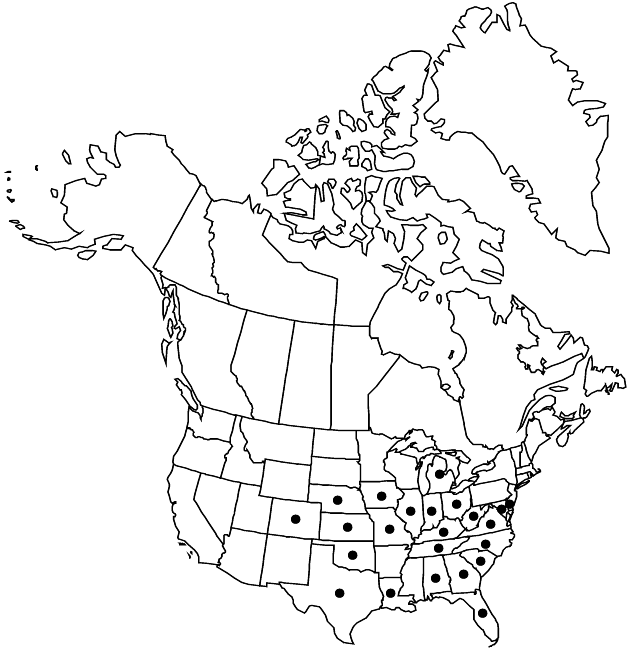Liatris squarrosa
Fl. Bor.-Amer. 2: 92. 1803.
Plants 30–80 cm. Corms globose to slightly elongate. Stems glabrous or puberulent-villous. Leaves: basal and proximal cauline 3–5-nerved, broadly linear to linear-oblanceolate, 70–220 × 2–12 mm (largest usually distal to proximalmost), gradually reduced distally, puberulent-villous or glabrous, weakly gland-dotted. Heads borne singly or (3–26) in loose, racemiform to spiciform arrays. Peduncles 0 or (spreading to ascending) 1–8(–20+) mm. Involucres cylindro-campanulate, 12–20(–25) × 7–10 mm. Phyllaries (usually erect, sometimes spreading-reflexing on the distal 1/3) in 5–7 series, narrowly ovate-triangular and foliaceous (outer) to ovate or oblong-triangular, ± equal, glabrous or pubescent, margins without hyaline borders, stiffly to softly ciliate, apices acuminate to acute. Florets (10–)23–45(–60); corolla tubes glabrous inside (lobes adaxially hispid). Cypselae 4–5.5 mm; pappi: lengths ± equaling corollas, bristles plumose.
Distribution

Ala., Colo., Del., Fla., Ga., Ill., Ind., Iowa, Kans., Ky., La., Md., Mich., Mo., N.C., Nebr., Ohio, Okla., S.C., Tenn., Tex., Va., W.Va.
Discussion
Varieties 2 (2 in the flora).
See discussion under 1. Liatris compacta.
Selected References
None.
Key
| 1 | Stems glabrous; leaves glabrous; phyllariesglabrous | Liatris squarrosa var. glabrata |
| 1 | Stems usually puberulent-strigose (hairs soft, upturned or appressed); leaves sparsely pilose to glabrescent; phyllaries usually ciliate, faces glabrousor pubescent | Liatris squarrosa var. squarrosa |